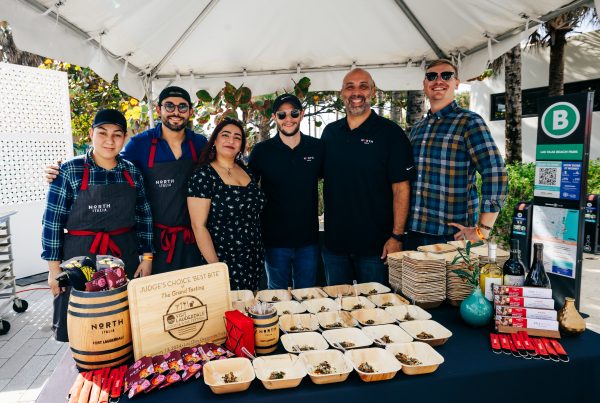A decade ago, then-President John Kelly tied Florida Atlantic University’s future to sports. That was a challenge for FAU then, and it’s a much bigger challenge in the transformed world of college athletics.
To say that the business has changed in the last six years—and especially the last few months—is to say that Boca Raton has changed since FAU opened in 1964 as an upper-division university for commuter students. College athletes no longer must work as unpaid amateurs. Players are much more in control, and those in charge are reviewing their business models and scrambling to adjust.
FAU Director of Athletics Brian White says, “Every discussion you could imagine is going on.”
For decades, athletes were bound to the college that signed them to their team right out of high school. That all changed in 2018 when the National Collegiate Athletic Association (NCAA) created the transfer portal. That means student players could change campuses every year, if they wanted.
Then in 2021 came the ability for players to make money from name, image and likeness (NIL) deals. NIL money doesn’t come directly from the school; it comes from a collective—TheLinkU, in FAU’s case—but athletic directors, coaches and others can make appeals to potential donors.

And last May, the large-school conferences known as the Power 5 agreed to settle lawsuits by former athletes seeking a share of past revenue they helped to generate. The deal requires back pay of $2.7 billion and as much as $20 million in annual revenue sharing from each school starting next year. The deal officially ends the amateur status that athletes had held for more than a century. With that change comes the possibility of athletes being declared university employees, forming unions and bargaining collectively.
“We’re all navigating new territory,” White says. “We would like more clarity.” And that was before the settlement. In early June [the deadline for this article—Ed.], officials were uncertain how the settlement would affect FAU. The American Athletic Conference, in which FAU competes, was not a defendant in the lawsuits. Still, it seems inevitable that all schools will be paying athletes directly.
We are at this chaotic point because the NCAA refused for decades to acknowledge that the system of unpaid labor was enriching coaches, athletic directors, universities and TV networks—everyone but the laborers. To understand how much money is at stake, way back in 2009—after two national championships each in football and basketball—the University of Florida made $5 million in royalties from sports merchandise on the backs of student athletes.
Public pressure forced the issue. Florida and other states passed laws allowing NIL payments; the state also just allowed them for high school students. The U.S. Supreme Court issued a key, unanimous ruling in 2021 that colleges can’t prohibit such payments. Change overwhelmed that system like a flash flood, even affecting those at the top.
When Nick Saban retired last January after winning six national championships at Alabama—and seven overall—he cited NIL as one reason. Saban said top-tier recruits were asking first about money and not about how Alabama could make them better football players.
“All the things that I believed in, for all these years, 50 years of coaching, no longer exist in college athletics,” Saban said during a roundtable on Capitol Hill in March. “It was always about developing players, it was always about helping people be more successful in life.”
Money thus becomes even more important. The largest college athletic budgets are roughly $250 million. In the June presentation to trustees, FAU’s budget for 2024-25 was $35.5 million to field 19 teams, eight for men and 11 for women.
FAU does not have an entrenched alumni network like the University of Florida, Florida State University or the University of Miami. The American Athletic Conference is one of the lower-tier Group of Five in college football. UF competes in the Southeastern Conference, and FSU and UM are in the Atlantic Coast Conference. Both conferences are among the Power 5, which gets far more lucrative TV contracts than smaller conferences.
But White and FAU Football Coach Tom Herman emphasize that FAU does have Boca Raton.
The plan, White says, is to “tap into the wealth” of the city. With the NIL collective, “you can put a number” on how much it would take to finance a top-tier team in any sport. With enough financial backing, “We can win a national championship here.”

Herman also cited “the wealth” in Boca Raton while acknowledging how different the job is since he first became a head coach in 2015 for the University of Houston Cougars. Now, he says, “We’re raising money, we’re dealing with the transfer portal.” Herman was out of coaching in 2021 and 2022 after the University of Texas fired him. After a disappointing 4-8 record at FAU last season, Herman acknowledges that he is only now “finding my sea legs again.”
Speaking of wealth, White and Herman believe that the Schmidt Family Complex for Academic and Athletic Excellence, which opened in 2020, offers FAU a big recruiting tool. The naming donation was the largest in the college’s history.
“It is critically important,” White says. He points out that FAU’s athletes graduate at a higher rate than the overall student population. Even in this new era, almost all athletes won’t get big money and won’t go pro, so they will need a degree. Herman said the facility is “nothing like we had at Texas.”
Referring to the transfer portal, White says it’s now possible for an athlete to play at four schools in four years. “That’s not a great path to graduation.” In what sounds like an antiquated reference, White adds, “We still want to offer the best student-athlete experience possible.”
To that end, however, coaches will have to adjust. Herman explains how difficult that can be. Football players can transfer in January and again in April, before the coming fall season. “If they’re unhappy,” Herman says of new arrivals, the roster that a coach has been building could change in three months. “You have 85 guys [the maximum number of players on scholarships—Ed.] on six-month contracts. This is not what I signed up for.”

Herman acknowledges that coaches “make poor victims.” He will make $1 million this year, and that’s a comparative pittance to Mike Norvell’s $10 million at FSU and Billy Napier’s $7.3 million at UF.
But Herman also cites an aspect of college football that transfer-portal turnover may upend: the potentially life-altering relationship between coach and player.
“I was the only child of a single mom,” Herman recalls. “Coaches rescued me,” enabling him to graduate summa cum laude from California Lutheran University and embark on a coaching career that led him to be recognized as the nation’s top assistant when he was offensive coordinator for Ohio State’s 2014 national championship team.
At Ohio State University, Herman dealt with a sometimes-temperamental quarterback, Cardale Jones. He played sparingly until the team’s starting quarterback broke his ankle, making Jones the starter in the Buckeyes’ three most important games of that championship season—the Big Ten Championships and the College Football Playoff.
Jones, Herman said, told him that under the new transfer portal rules, “I would have been long gone” well before 2014. “I hated you as a freshman. But you were the only person who believed in me.” Jones starred in all three games.

The other relationship at risk is the one between the college and its fans, especially students. Constant turnover could make it hard to identify with the team, whittling away at collegiate traditions of buying the jersey of their favorite player, reminiscing on the “era” of a star quarterback, or cheering on an alum when they make it through the NFL draft. Payments to “student-athletes” could further separate them from their peers.

White says, “Our fan base has grown faster than ever.” In late May, Deputy Athletic Director Michael DeGeorge said“early results” for men’s basketball season tickets were “looking good” after FAU Basketball Head Coach Dusty May left for Michigan. Football season ticket renewals were up 40%. At FAU, as at most schools, those two sports generate the most revenue.
In essence, White says, winning solves everything. NIL now could become “the most important component of winning.” He believes that the transfer portal also could benefit FAU. “A lot of talent leaves South Florida.” The portal offers a way to “come back home.”
Amid speculation that the largest, richest colleges might form their own super-conference in football, there has been talk of the G5 conferences holding their own playoff. White disagrees. Under the new, 12-team format, White says, the American Athletic Conference (AAC) champion can get in. “Our focus,” he says, “is on the College Football Playoff. There is a chance” for FAU.
Before then, though, the emphasis is on winning a conference championship. That happened in 2022-23 with men’s basketball—before the Owls’ Final Four run—and the team came in second last season. The softball team finished first in the AAC last year and made the NCAA tournament.
But the football team was ninth in the 14-team conference. Herman understands that FAU fans expect more. He notes that five of the Owls’ eight losses were by six points or fewer. The transfer portal that worries Herman also brought “34 new faces” in January to change those outcomes this year.
New men’s basketball coach John Jakus also faces a challenge—sustaining the progress that began under May. Because of that transfer portal, FAU lost its top four scorers after May left. However, the Owls also gained five players through the portal. “I’m very excited,” White says, “about the talent coming in.”


Now, however, colleges will compete over money, not just talent. Those Power 5 conferences reportedly want to foist 60% of that $2.7 billion onto the Group of Five conferences.
Major schools don’t want to make hard choices. Sharing that $20 million with athletes could mean cutting expenses, such as coaches’ salaries. Athletic departments are facing scenarios that seemed unimaginable just a few years ago.
And what if players unionize and threaten to strike over revenue sharing? Will colleges seek investment from private equity firms to bring in more revenue? Will coaches have to wear as many corporate sponsor logos as NASCAR drivers?
White says, “We have to adapt and be flexible.”
This article is from the September/October 2024 issue of Boca magazine. For more like this, click here to subscribe to the magazine.







